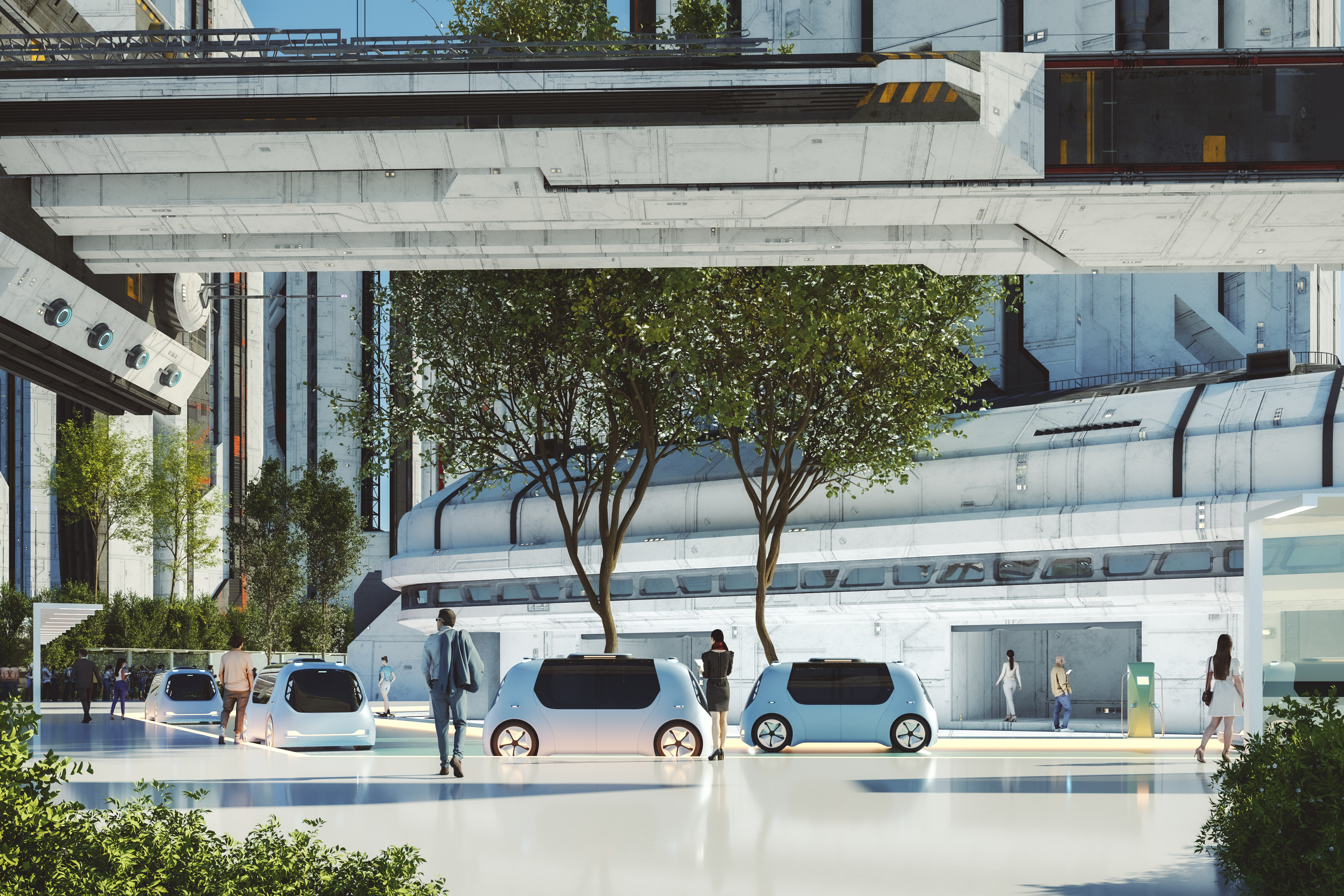In the year 2040 there will be 55 million passenger cars on the roads – according to the vision of the Federal German government in its transport routes and mobility plan for 2040 (BVMP 2040), published in May 2023. The German Federal Association for eMobility (BEM) has expressed strong criticism against this direction in transport policy because it is missing the opportunity to extend local public transport networks, rail travel and alternative mobility concepts. The BEM anticipates an “update to the plan in order to consider technical innovations” by the Federal government. Innovative manufacturers in Hall 8 of Eurobike, which carries the title “Future of Mobility” will be showing what form these innovations might take. The BEM is a cooperation partner of Eurobike and is providing information on new mobility concepts.
LEVs as an interface between e-bike and car
Light electric vehicles, or LEVs for short, are regarded as a vital element in tomorrow’s mobility mix. The vehicles are driven by an electric motor and can travel at up to 45 km/h. The range extends from bicycle-like conveyances, cargo bikes and scooters through to small transporters, which may have an unladen weight of up to 600 kg. LEVs are commonly referred to as the important link between e-bike and electric car – and, due to their many different applications, from transporting people to freight, they are expected to have great potential in the future. After all, if the number of cars continues to rise in the coming years, the roads will remain congested, particularly in the cities, and there will be no reallocation of public space to improve quality of life – even if cars are to become electrified. LEVs are an alternative that needs to be adopted. Today’s e-bikes and cargo bikes in particular are seen as establishing the base on which current development can take place.
Benefits compared with e-bike and car
An important aspect is that LEVs are intended to reduce the existing (and familiar) drawbacks of electric bikes compared with electric cars. They offer protection against the weather and theft, for example, a secure private sphere inside the vehicle or the facility to carry one or more passengers. Similarly, there are many advantages over the car or transporter. Due to their smaller size, the vehicles take up significantly less space in flowing and stationary traffic. They can then in turn liberate space to improve the quality of life. In terms of manufacturing too, they need less material than a passenger car, thus conserving resources and raising cost-efficiency. This is especially true of the battery: as the vehicles are lighter, they have less mass to convey, which allows them to be fitted with a lighter battery than is necessary for a car. Furthermore, the vehicles are capable of driving without emissions and do not generate any CO2.
Creating mobility for all

An additional incentive and one that should not be underestimated is the favourable price. The purchase costs are well below the prices of electric cars. This makes the vehicles interesting for school and university students, apprentices and senior citizens, for example, who would then have an alternative mobility option for short distances. In combination with public transport, it would provide them with a convenient means of transport that does not rely on help from other people. The only requirements is a Category AM driving licence, which can be obtained at the age of 15 or 16 years, depending on the federal state. These are all arguments that favour the success of LEVs.
Everyday utility is the buzz phrase
One important factor in product design is function. Everyday utility is the buzz phrase here. At the same time though, many ideas are still in their infancy. Thanks to digitalisation, the vehicles can be provided with simple updates, which also makes them capable of travelling independently. Added to this are solutions such as a chainless drive system, which increases both comfort and safety. Due to their low space requirement and the need for a means of transporting goods and people in the most climate-neutral way possible, small pedal-driven cars and heavy cargo bikes are expected to deliver great potential – and in the context of autonomous driving as well. Production will see the use of standards from the automotive sector, such as in the shaping of the frame, which can be designed individually with different modules to suit the intended use. Overall, LEVS can therefore contribute to persuading more people onto bikes.
Creating infrastructure – in traffic and for charging
Despite all the euphoria surrounding the topic, there are two key points that remain to be clarified and both of them concern infrastructure. The first step involves finding suitable spaces for the vehicles within the traffic mix. Many LEVs are too wide for cycle paths. And with a speed of 45 km/h, they are too slow to share the road with cars, even in built-up areas. For this reason, BEM is demanding a rise in the top speed of LEVs to 69 km/h. Mobility consultant Christioph Neye is contemplating a separate, designated lane for LEVs, which may be at the expense of existing car lanes in large cities.
A second point is the charging structure. Unlike the batteries of e-bikes, those of LEVs cannot simply be charged from domestic sockets since, like cars, the vehicles are often parked at the roadside or on public parking lots. A uniform charging structure, perhaps incorporating an e-bike charging infrastructure as well, and a standardised system of plugs would also advance the development of the LEV as a mobility solution. Exciting ideas and approaches will no doubt be appearing soon, and some of them are bound to come up for discussion in Hall 8 during Eurobike.

